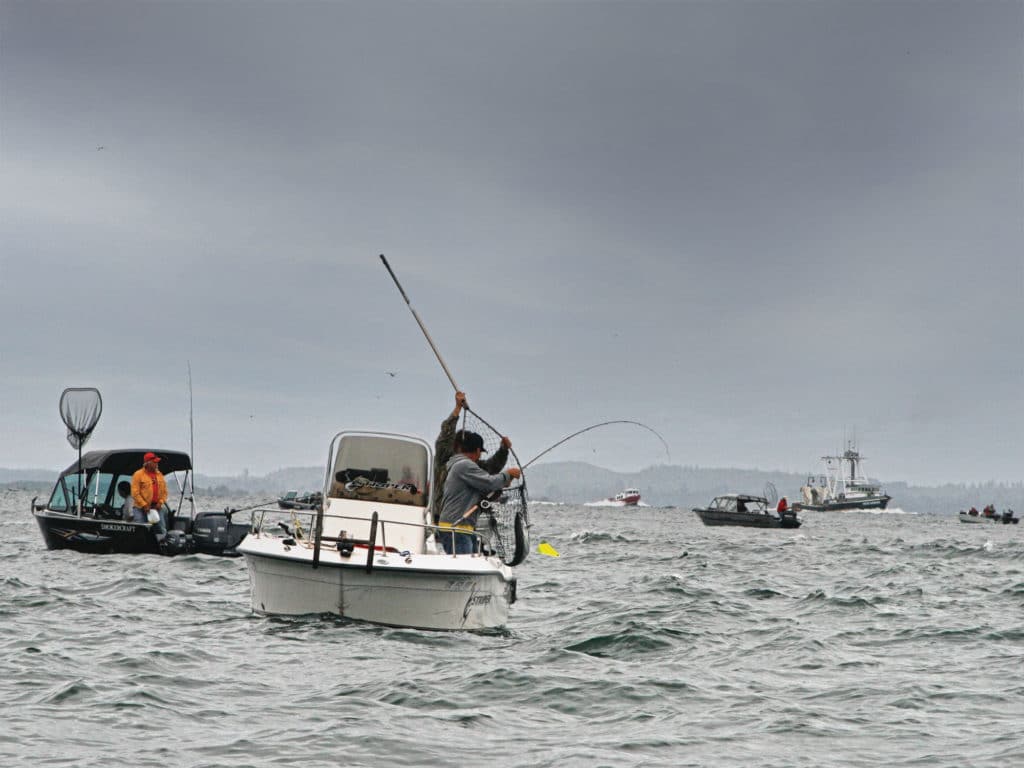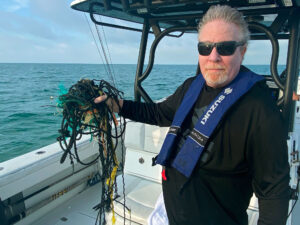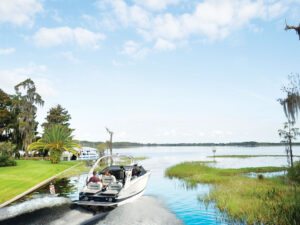
Fishing ranks as one of the top activities among American boaters, and today it’s more popular than ever thanks to a COVID-19-wrought boom in boat sales and angling.
With more boating anglers comes greater potential for conflicts over fishing spots, such as when one boat is fishing a spot and another crowds in to share the action.
One example is off the coast of Southern California in midsummer when anglers hunt offshore for small floating patches of kelp—known as paddies—that attract mahimahi and other gamefish. Anglers might invest many hours and miles searching for a paddy that can produce great fishing.
However, a stopped boat and bent rods attract attention from others, some of whom crowd in rather than finding a paddy of their own. Two stopped boats attract even more attention, and so crowding grows, often resulting in a fleet of boats jockeying for position, running over other lines, cutting off hooked fish, and usually scattering the mahi. Tempers flare and confrontations ensue.
Interlopers will say that no one owns the water or any fishing spot, whether another boat is fishing there or not. At the same time, common courtesy and respect for other anglers goes a long way toward preventing conflicts. Let’s look at how you might extend these principles to other boating anglers.
Multiple Spots
Have a number of spots in mind for the area that you plan to fish as you set out for a day on the water, in case you find your favorite wreck or rock pile already occupied. With a game plan that includes a number of spots, you can immediately move on to the next and hopefully have it all to yourself. The other boat was there first, and common courtesy dictates that you allow the crew to fish it in peace without interfering.
Wide Berth
When you see another boat fishing—whether it’s on anchor, drifting or trolling—keep your distance. This is wise in all situations, but in this case it prevents jostling the other boat about with your wake and spooking the fish they are targeting, and ensures that you don’t cut across their chum slick or fishing lines. If a narrow channel or congestion forces you to cut the distance, slow down to reduce your wake and be careful to avoid any fishing lines.
Don’t Cut In
A common scenario in freshwater fishing takes place when one boat, powered by an electric trolling motor, moves slowly along a river bank or lakeshore while casting lures for bass. In this case, it’s a major faux pas to jump ahead of the boat and start fishing. Common courtesy dictates that you find another stretch of shoreline far removed from the other boat to avoid any interference and potential conflicts.
Follow the Pattern
There are times when crowds are the order of the day, such as during the brief Buoy 10 late-summer salmon season near the mouth of the Columbia River. On this stretch of the river between Oregon and Washington, throngs of anglers troll rod tip to rod tip for king salmon. There are minimal tangles and conflicts because virtually everyone trolls in parallel to each other, whether heading up- or downriver. When it’s time for a boat to reverse course, the crew reels in lines and, when safe to do so, the captain executes a quick U-turn, and the lines go back in the water.
Read Next: Top Ten Rules for Marina Etiquette
Following parallel trolling patterns has become an unwritten code of conduct for anglers fishing the Columbia River during the Buoy 10 salmon season. It serves as a shining example of how respect, cooperation and common courtesy can help avert conflict and ensure peace on the water.









